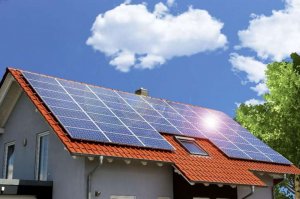You may have considered the option of installing solar panels in your home whenever you receive your rising monthly electricity bills. Even though this may be a good option, it’s better to determine if you can install them on your property to avoid making the wrong decision. Various solar panel experts can also help assess your property for installation.
However, as you look into installing solar panels in your home, a little research can give you more insight into this possibility. If you’re in the United States, you may need to search for the best states for solar power. Apart from climatic conditions, some states may give incentives to residents who use renewable energy sources like solar energy. Solar panels in Texas are a lot more affordable because of the state’s incentives and rebates.
Here are some points that can help determine if your property is a good candidate for solar panels:
- Orientation And Angle Of Your Roof
Depending on your location, the angling of your roof plays a crucial role in getting the optimum tilt of the solar panels. This can vary on which hemisphere you are located. For example, if you’re in the United States, it would be ideal if your roof faces southwards, with the ridge running east to west. It’s essential to note in this case that the roof shouldn’t be completely flat. A flat roof may need more props to angle the panels and increase installation costs.
Solar panel experts recommend a 30-degree angle as the standard tilt for solar panels. However, this may vary depending on your distance from the equator and the hemisphere. You can consult your local solar panel company and ask for advice on the best angle. Overall, solar panels would give you optimum power if your roof orientation allows exposure to the sun’s rays between 9:00 a.m. and 3:00 p.m.

- Type Of Roof You Have And Its Need For Replacement
While considering installing solar panels on your roof, you should take note of the material, size, and age of the roof. Solar panel mounts need strong material to hold them in place and hold the weight. Asphalt shingles and concrete tiles are good candidates for suitable roofing materials. You can still install solar panels on roofs made using wood shake tiles or clay or slate; however, ensure the installation is done by a professional. Although the good thing is that most solar panel suppliers have mounts that can work on most roofing materials.
Once you determine that you have good roofing material, the size of your roof also matters. The number of solar panels to install and the power output the panels can accommodate will depend on this. If the roof size is small, you may not get enough panels to cater to your energy needs, and you may need to add electricity to cover up the deficit. This may not be as economical as you want it to be.
Solar panels are durable, and most can last for more than 20 years. Therefore, you should ensure that your roof’s condition can sustain the weight of the solar panels for that long. If your roof is getting old or due for replacement, it’s better to do so before installing the solar panels. This is because the installation may need professional service and is a tedious process. Additionally, the solar panel weight may accelerate the aging of the roof.
- Obstacles Or Shading
When you’re looking at installing solar panels on your property, it’s critical to take note of any objects or vegetation that may hinder optimal sunshine on the panels. Therefore, when choosing the position for the solar panels, you should factor in tree shades during the different times of the day. Moreover, look at other obstacles like nearby buildings, chimneys, and air-conditioning units.
If any case, these factors significantly affect the placement of the solar panels. You may need to adjust as necessary or seek a solar professional’s help if you aren’t sure how to move along with your plans. Solar experts use satellite imagery to determine the best position for your solar panels. Satellite imagery helps map out the sun’s path throughout the year, thus giving the best place to receive optimum sunshine. Thus, the solar panels must not get excessive shading once installed to get the best output possible.
Conclusion
Your property may generally be a candidate for solar panel installation. However, a little investigation can help determine if it’s a good fit for the said installation. You may need to refer to the points discussed here during your evaluation process. Furthermore, it’s advisable to consult your local solar panel professional for more technical evaluation, like performing satellite imagery.
